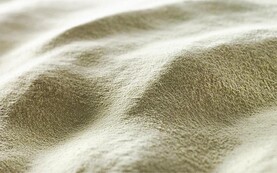Given agriculture is the cornerstone of every island in Orkney, from the Mainland right up to North Ronaldsay, farmers need a place around which it can all centre. In a throwback to what some may consider to be a passing era, Orkney Auction Mart provides that epicentre.
The mart is located on the outskirts of Kirkwall town and has been in operation in its current form since 1993, when Kirkwall Auction Mart and West Mainland Mart amalgamated. Malcolm Scott is the current mart manager and has been involved with the business since he was 18.
“Originally, I started here as a trainee auctioneer, when the only way to train was on the job. I was fortunate that there were three great auctioneers already here, John Copeland, Gordon Muir and Jim Linklater, so I listened to them and visited all the local farmers, getting to know them.”
After nine years Malcolm decided to move to the local council for a further nine years, before returning as office manager and eventually becoming manager in 2015. He now oversees one of the most complicated mart operations in Scotland.
More than a mart
With Orkney’s geographical location and the spread of agriculture right across all its islands, Orkney Mart has become a hybrid between a mart and cattle lodge. As Malcolm explains: “For a Monday sale we’ll start gathering cattle in from the isles the Wednesday before. They will be housed here, where we will bed and feed them until it is time for the sale. Logistically, it just would not be possible to bring everything in the day of the sale given everything has to be shipped in, unless it is from the mainland.”
To do this, the mart owns 270 acres of the surrounding land that can be used to graze cattle and grow silage for winter sales, when cattle are housed indoors. This system of operation also allows stress for the animals to be minimised until the point of sale.
“Once animals arrive they will be grouped according to the batches they will be sold in and they will also have a chance to recover from any dehydration during the boat journey in. The staff here are for the most part all local farmers, so they are well used to handling cattle and that is a major benefit when it comes to reducing stress. It also has the added benefit of creating extra employment in the local community.”
Servicing the densest cattle population in Europe
Yearly, Orkney mart sells 17,000 to 18,000 stores, fat cattle and cull cows, along with 35,000 to 40,000 sheep, which sees a turnover of £20m into the local economy. In recent times the mart has moved towards a system of holding special sales of 600 to 1,000 plus cattle one Monday a month, rather than smaller sales.
This helps them attract the buyers from places like Aberdeenshire or Edinburgh, who play a crucial role in purchasing many of the cattle sold through the ring.
Of course, like with most things in Orkney agriculture, the weather can often prove detrimental, with boats delayed and flights cancelled. Cattle that are sold are transported to the nearby pier, where they are loaded onto specially designed livestock containers with free access to hay and water for the animals, along with self-contained slurry storage.
Each one of these can hold 21 cattle and are loaded onto boats to be shipped to their buyers on the mainland.
“At the end of the day the mart is owned by farmers and run for farmers’ benefit. We all want to keep agriculture alive here in Orkney, not just on the Mainland but on all the islands too, because they have some of the best land, therefore the mart plays a key role in that,” Malcolm Scott concludes.






 This is a subscriber-only article
This is a subscriber-only article














SHARING OPTIONS: